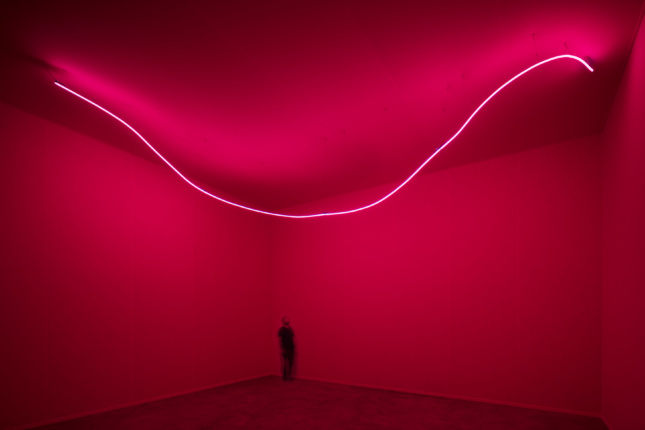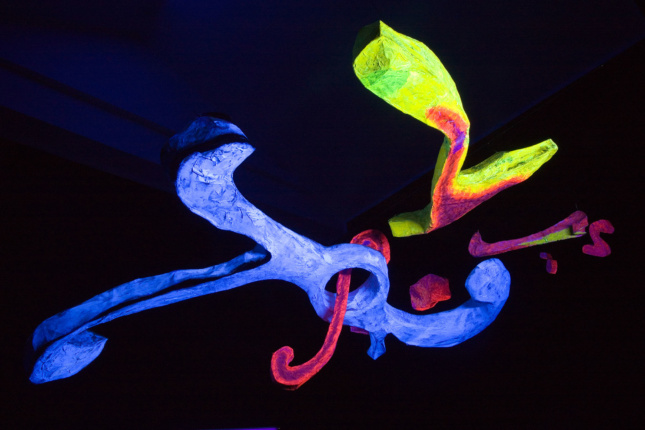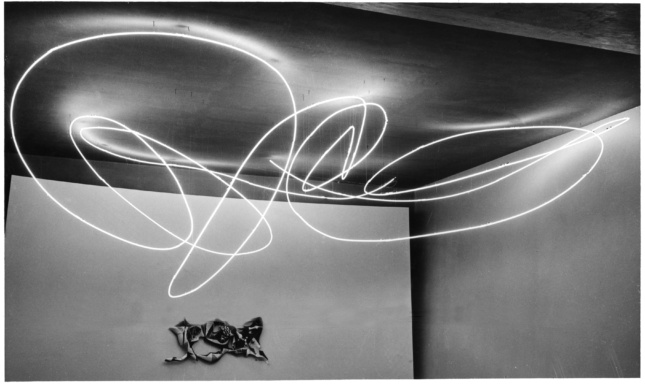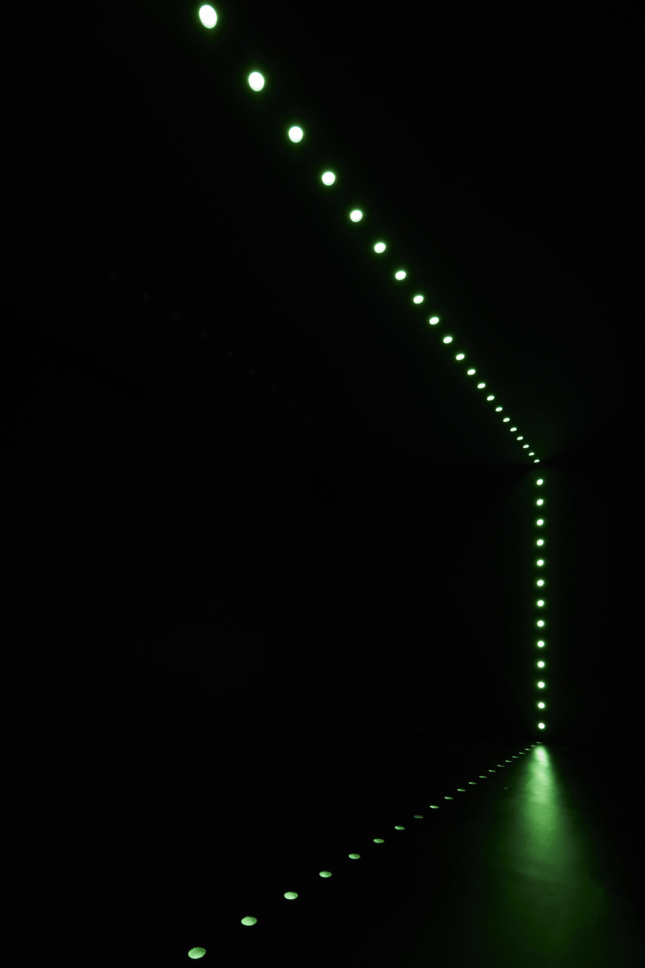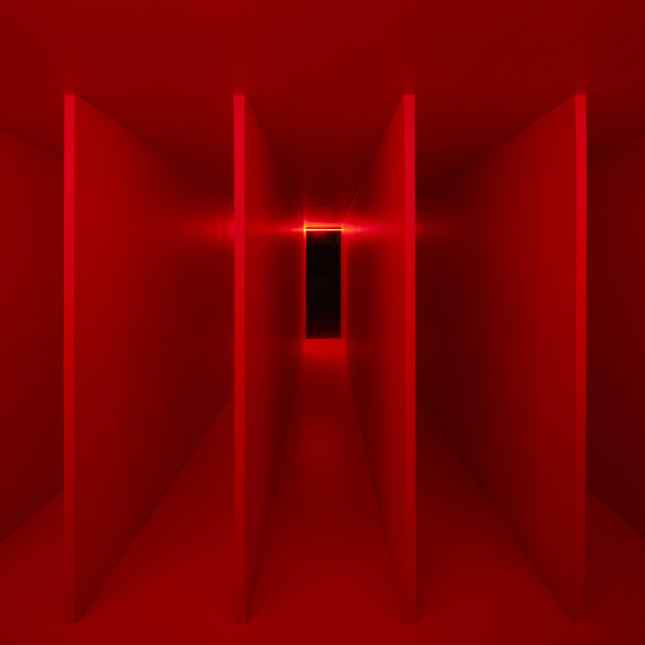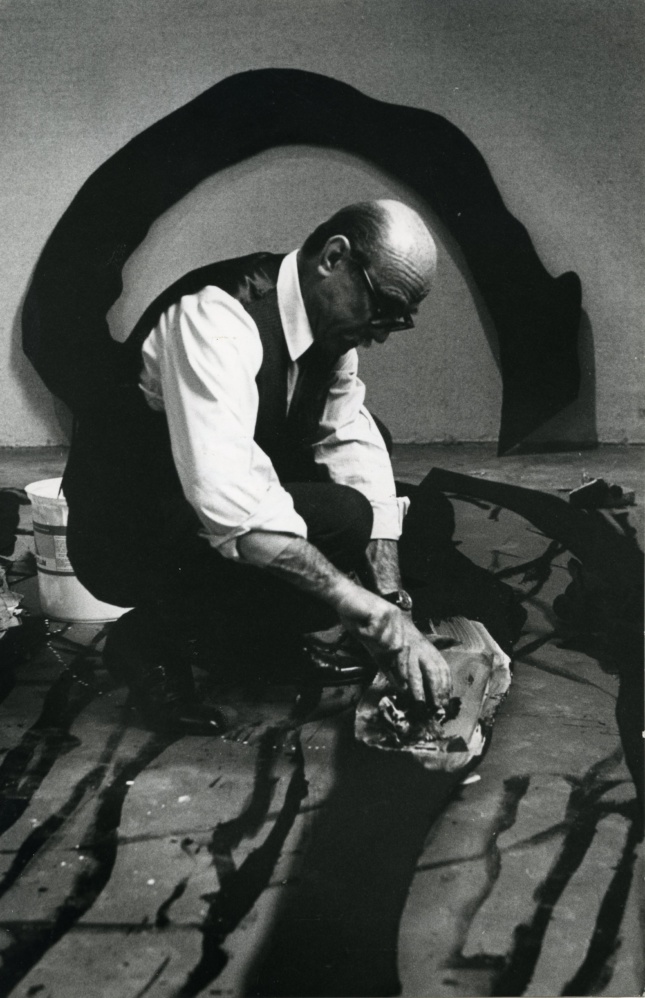Students of art history may be familiar with Lucio Fontana, the Argentine-Italian conceptual painter, sculptor, and founder of the Spatialism movement. Fontana gained international acclaim in the mid-1950s with his slash series, for which he cut into the canvas surfaces of monochrome paintings to provoke a sense of depth unachievable with paint alone. Though the canvases came to dominate his outward canon, Fontana was, however, also exhibiting immersive artworks around the world as early as 1949—nearly two decades before artists James Turrell and Yayoi Kusama first developed their first atmospheric experiments in the late 1960s.
A recently-opened exhibition at Hauser & Wirth’s Los Angeles outpost recreated nine of Fontana’s lesser-known Ambianti spaziali (Spatial Environments) across three of its main galleries. Curated by Luca Massimo Barbero in collaboration with the Fondazione Lucio Fontana, Walking the Space: Spatial Environments, 1948-1968 is the first comprehensive presentation in the U.S. of the late Italian master’s three-dimensional work that, in the words of the artist, seek to ‘open up space, create a new dimension, tie in the cosmos, as it endlessly expands beyond the confining plane of the picture.’
Arranged chronologically, visitors begin the exhibition by pulling apart heavy curtains to enter Ambiente spaziale a luce nera [Spatial Environment in Black Light] (1949), a pitch-black room illuminated only by a few black lights pointed at a fluorescent papier-mâché sculpture hung from the ceiling by fishing wire. The piece recalls the sculptures of Frank Stella and Aaron Curry—but while those are often affixed to the walls or centers of well-lit gallery spaces, Ambiente spaziale a luce nera adds the illusion of weightlessness, a characteristic Fontana sought in artwork as a nod to the Space Age in which he was practicing.
The installations following Ambiente spaziale become more interactive, the material palettes increasingly vary, and the spatial layouts of the work becomes increasingly labyrinthine. A gallery attendant warns visitors before entering Utopie [Utopia] (1964) that the carpeted undulating floor makes navigation difficult, and they should be prepared to duck when the floor reaches three feet beneath the ceiling. The following installations challenge—and, over time—heighten spatial awareness through a series of tactile illusions set in motion by focused lighting and ambiguous arrangements.
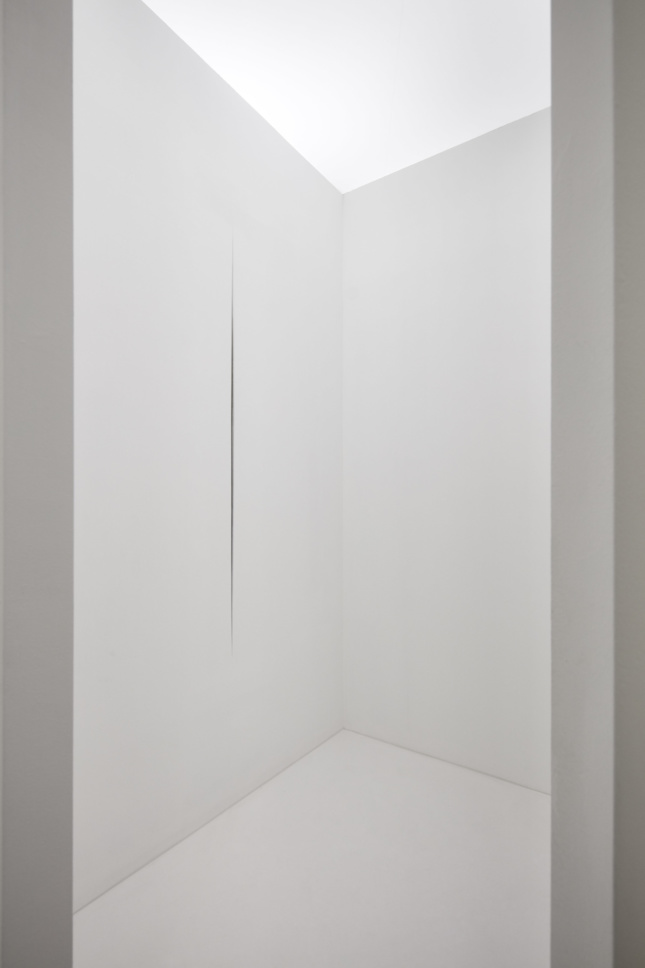
Walking the Space: Spatial Environments, 1948-1968 opened on February 13 and will be on display through April 12. Hauser & Wirth will present two more exhibitions on the work of Lucio Fontana in the near future; one in New York in Spring 2021, and another in Hong Kong in the fall of the same year.






